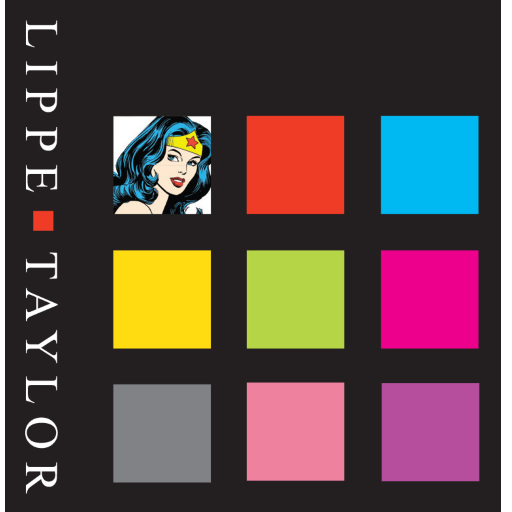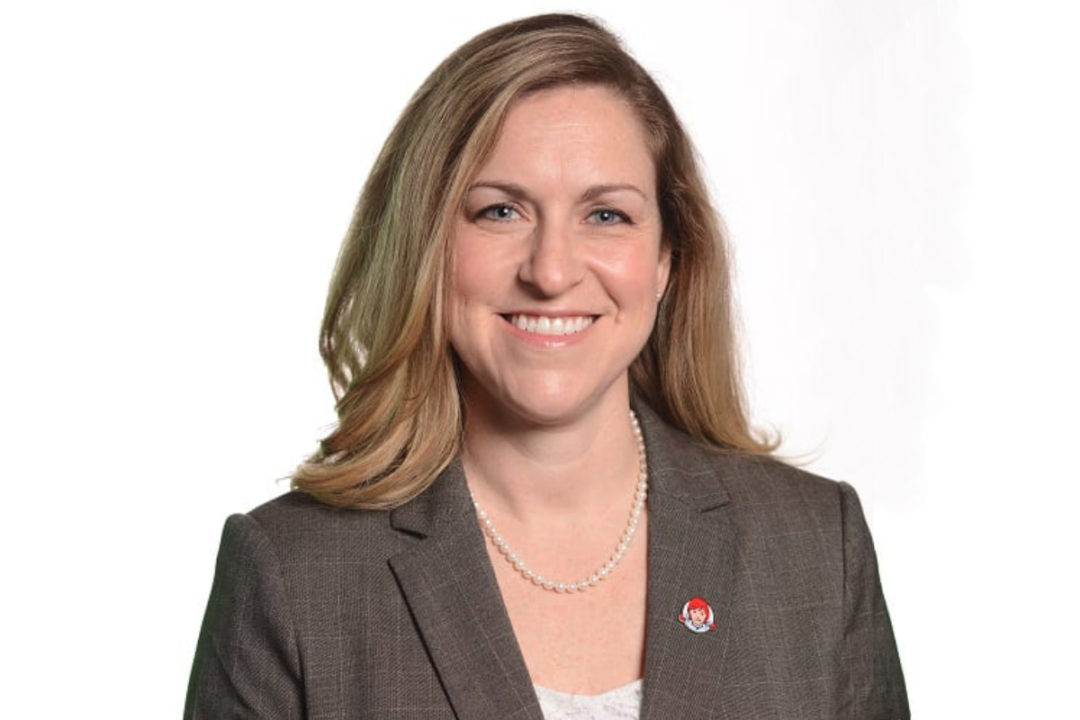Lippe Taylor 07 Jun 2022 // 4:05PM GMT

Grant Farhall has been with Getty Images for 10 years, the last two as Chief Product Officer. Earlier, he worked for Rogers Communications as a Broadcaster/Newsroom Assistant at radio station CFFR (660 on the AM dial). Before that, Grant was a studio manager for Evolv Media, Inc.
Gene Foca has been with Getty Images since 2017. In his capacity as Chief Marketing Officer, he reports directly to the CEO and serves on the Executive Committee that oversees the brand’s Global Marketing and Communications efforts.
Before joining Getty Images, Gene was Senior VP of Marketing for Fresh Direct. Earlier, he spent four years with Amazon, ultimately rising to the post of Senior Director of Marketing.
In this interview with Lippe Taylor CEO Paul Dyer, Grant and Gene focus their thoughts on the merging of Marketing and Product teams, data-driven visual content procurement, the trust-damaging impact of deep-fake technology, and what Getty's acquisition of free photo source Unsplash might mean to creatives.
Feel free to listen to the entire conversation on Frictionless Marketing, a Lippe Taylor podcast.
Here are some key takeaways from this talk with Gene Foca and Grant Farhall:
Visuals of all mediums are in a crisis of trust.
It is becoming ever easier to produce "deep fake" photos and videos, which is causing consumers of media to question whether anything they're seeing these days is real–representing a trust crisis for visual-based companies and news media alike. Grant said part of the response to this emerging crisis of believability must be an insistence that creators of visual content clearly label their works as real or augmented—and, if the latter, to identify the CGI elements so that prospective users can exercise informed consent before buying. Beyond that, multiple measures are being taken to ensure that all changes and alterations made to visual files (both video and images) have an indelible record of alterations visible to anyone with the file.
Marketing pros must embrace the merging of their discipline and that of Product Managers.
Grant said it once was common for Marketing and Product Development to be separate entities that each did its own thing, but more and more they're being pressed to work collaboratively. Consequently, said Gene, marketers have to be "less hung up" about having control of the things traditionally within their discipline, and to instead partner with the product team in order to more successfully support the customer journey. This is a naturally cohesive path forward that integrates marketing insight and consumer demand with insight-based innovation that enables product development.
In order to rise to a position of leadership in your organization, become better at finding problems and turning yourself into a solutions architect.
Both Gene and Grant agreed that people on their way to the top need to be able to play well with others. Additionally, Grant said ladder-climbers should be on the lookout for shortcomings in the organization’s operations, take ownership of them, and figure out how to fix what’s broken or not running right. “Be the expert in the area that needs an expert,” he said. Meanwhile, Gene cautioned against misunderstanding what it means to “follow your passion.” According to Gene, “people too often think that following their passion means they can and should jump from the tasks they don't like to those they think will be more satisfying. But to understand the underpinnings of the business, you first have to do the tedious, menial work. You have to learn how the pieces connect. From there you start being able to exercise your passion.”
The Interview
Paul Dyer: I'm joined here today on Frictionless Marketing by Getty Images’ Chief Product Officer Grant Farhall and Chief Marketing Officer Gene Foca. First question, Gene—what are marketers not understanding with regard to the evolution of Marketing as an industry and of Brand Marketing specifically?
Gene Foca: I think what they’re missing is the actual extent to which Marketing is now driven by data. Marketers have always needed to use data in order to help them work with the Product Department and others. But now, more than ever, data is driving the process of building a customer journey that’s as friction-free and delightful as possible.
Grant Farhall: That’s right, and what we have now is more people—especially small businesses—using visual content. They want to feel that they're making the right choices to maximize their market spend. So they need to know which visuals are going to resonate and communicate the right message in the right way. And this is where data comes into play. But the challenge for us as a content brand is, how do we help these customers access that data in ways that are relevant to their business?
Gene: Putting that data to best use is, I think, one of the big questions. Getty has compiled a vast and powerful amount of information over a very long time. To help our customers get the most benefit from that data, we have on staff an expert team of global creative professionals made up of former visual content creators as well anthropologists and data scientists. This team has been exceedingly good at working with our contributors to give them direction and advice that, frankly, other players in the visual content world don't offer.
Paul: In recent times, the line between Product and Marketing has become blurred. Would you agree?
Grant: Yes, but Product is still a discipline of its own. In different organizations that’s going to mean different things, because each company has its own perspective on what Product Management is, how they approach it, and the role it serves. At Getty Images, we don’t look at Product Management the traditional way, with the Head of Product positioned as a mini-CEO who has high-level decision-making authority. Instead, we look at Product as a highly collaborative piece of the organization. We believe that our Product Managers should understand the customer, first and foremost. After that, they should understand the market we compete in and how we're lined up against our competitors. We expect our Product Managers to bring forward the most meaningful problems to solve and/or the most meaningful opportunities to chase.
But, by the same token, our Product Managers do not have to be the one with the big idea. At Getty Images, we don’t care where in the organization the right solution comes from, as long as it comes. What does that mean between Product and Marketing? It means they can work hand in hand as true partners and be truly collaborative.
Gene: The way I see it, Marketing and Product have evolved a lot and yet very little. What I’m saying is that marketing has not changed as an academic discipline or as subject matter—it’s that it now no longer sits under just a Marketing Department. Consequently, we as marketers have to be less hung up about what we control on our own in a silo. We have to look at Marketing through the lens of the customer and focus on how to build a value proposition and support that customer journey. At Getty Images, we do that collaboratively with Product and Technology, because that's how we believe Marketing is supported. Editorial and content play a role, as do other departments. So, basically, our brand is built by a number of different departments supporting and supported by Marketing.
Paul: Let’s talk about Unsplash, which Getty acquired in 2021. It offers over a million high-resolution photos, all free to download. My take on Unsplash is its DNA is very different from that of another Getty property—iStock. In fact, I think a lot of people see Unsplash as a sort of anti-iStock. How are you managing its integration as a member of the Getty brand?
Gene: Unsplash hasn’t presented itself to the world as the anti-iStock, though, once upon a time, iStock was in some respects what Unsplash is today. We see Unsplash as helping us complete the way we service the entire creative economy, sort of a visual content-as-a-service model where we meet the needs of large global organizations through personalized registration and unlimited seats by which customers can access packages of content delivered largely through subscriptions that have varying degrees of complexity associated with them in terms of rights and support.
Then there’s iStock, an eCommerce model that’s largely driven by paid digital marketing and search-engine optimization. iStock is squarely targeted at global SMBs and SMEs that want to access visual content with little or no help from our global sales, service, and customer-success teams. Unsplash, on the other hand, allows us to reach the long tail of the creative economy because, whether it's one person or a 10,000-person corporation, that search for visual content largely starts the same way—at free content sites.
As for integrating Unsplash into our food chain, it will be a process made easier by the fact that it and our other brands share in common a belief that the quality of the content matters. The commonality is that, while each has differentiated content, our individual brands offer very impressive catalogs of strong visuals that stand out from what you see elsewhere.
Paul: Diversity, equity, and inclusion—DEI. That’s a business policy matter of importance to your clients, as it of course is for your organization. What discussions have you had about the role that Getty Images can play in increasing representation in advertising and marketing content?
Gene: Our mission is to move the world. Part and parcel to that is representing different people the way they should be represented. We take a lot of pride in our work with organizations to guide their visual content choices, so that in all forms of marketing communication, visual content is representing better, therefore allowing our customers to have greater impact on their own customers and even on their own organizations.
Paul: Getty has partnered with GLAAD to craft a series of specialized guidelines to help your photographers and videographers more authentically represent the broader LGBTQ+ community. Tell us more about this.
Gene: It’s a partnership driven by, as I mentioned, a desire to represent people authentically. Like our partnerships with Unilever and Dove, the AARP, and HBCU, this one with GLAAD recognizes our expertise, history, and leadership in representing people authentically.
Paul: There was a photo of a bombing in war-torn Ukraine, but it was later revealed as a deep fake. Is deep fakery creating a crisis of trust for brands like yours? If so, how are you addressing it?
Grant: We have very high editorial standards. We uphold them and require our creative partners to uphold them, too. But the increasing ease with which deep-fake visuals can be created means we must work harder to uphold those standards. In the future, the line between real and AI-generated will become increasingly blurred, because the technology will continue to develop in a very rapid way. Is it real? Is it not? What in that image is real? What has been generated versus shot? Is the person real? Is the environment real? Is the thing in the background real? Customers are going to want to clearly know what is real and what is not so they can make informed choices. We want customers to view us as a place where they can do that safely and with clarity. Do we have all the answers on how we will do that in every way? No, but that's the intent.
Paul: What advice would you give to people who’d like to ascend to a leadership position?
Gene: Be patient. It's often the case that younger professionals look at the first stages of their career and dwell on the seemingly endless low-level tasks they’re asked to do. They dwell on the long hours they have to put in to complete those tasks. But instead of dwelling on those things, they need to step back and appreciate the impact their first-stage roles have on the overall business.
Another thing is that people too often think that following their passion means they can and should jump from the tasks they don't like to those they think will be more satisfying. But to understand the underpinnings of the business, you first have to do the tedious, menial work. You have to learn how the pieces connect. From there, you start being able to exercise your passion. I'm not suggesting that people should waste time doing things that make them unhappy. But on the path to happiness, you have to be willing to work through some issues.
Grant: I would offer that you should be someone who adds value and makes an impact. More importantly, be someone people enjoy working with. That means you're kind, you're courteous. You're able to participate in discussions and debates without getting heated. If you can be impactful and enjoyable at the same time, people are going to want to involve you. That’ll lead to growth opportunities you might not have thought would come your way.
Also helpful is leaning in, raising your hand, stepping forward, showing some courage, asking the questions that no one might be willing to ask, having a view that no one else maybe is willing to express. Ask yourself, “What is no one looking at or what needs more attention?" And don't ask for permission, just go and start doing it, learning about it, so that you can be the expert in that area that needs an expert. That will create more opportunities for you. It will give you ownership over the development of your skills and career.
Gene: Being someone who people like to work with is undervalued. That’s a quality that can get you so much farther ahead in your career than being the smartest person in the room. It's much more important to figure out how to pull people in so that they naturally embrace your ideas rather than you having to explain why your idea is the best idea.
Paul: Thank you very much, Gene and Grant. We appreciate you sharing your time and your insights with us here today.


































.jpg)














